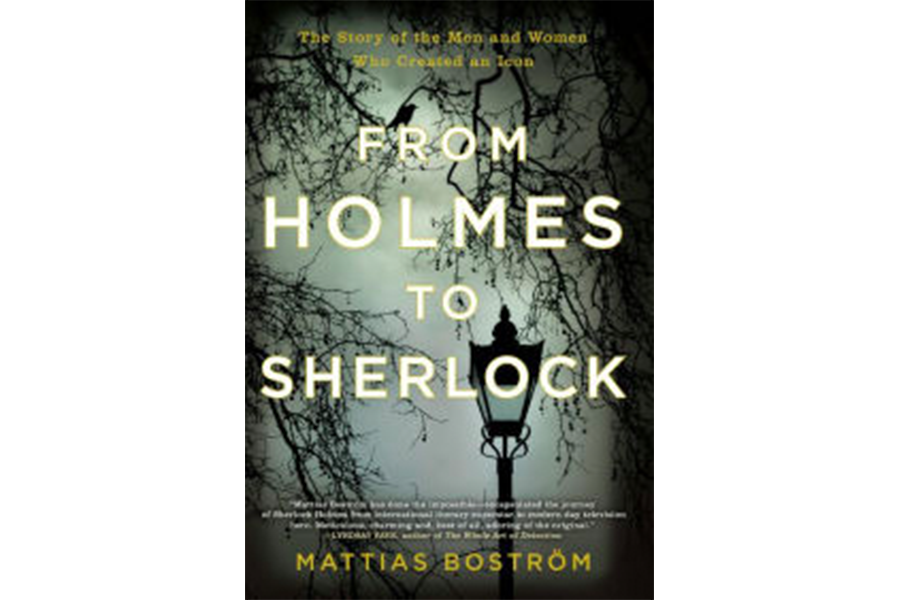'From Holmes to Sherlock' celebrates the versatility of one of fiction's most beloved characters
Loading...
It's at least as much a tribute to adaptability as durability that even the most die-hard Baker Street Irregular, hearing the name “Sherlock Holmes,” would very likely think first of Benedict Cumberbatch. The charismatic star of the BBC modernization created by Steven Moffat and Mark Gatiss and launched by the BBC in 2010 has become for millions of viewers the face of the character first created by Arthur Conan Doyle in 1887. The sheer screen presence of the star, his pitch-perfect chemistry with his Watson, Martin Freeman, and the sharpness of the writing in the series has not only won over a great many of even the pickiest aficionados but also served as an introduction to Sherlock Holmes for a whole new generation of fans.
That mutability – the fact that the Moffat and Gatiss Sherlock Holmes would be all but unrecognizable to the character's creator and yet so wonderfully conveys the character's essence – is at the heart of Mattias Boström's terrific new book, From Holmes to Sherlock: The Story of the Men and Women Who Created an Icon, which traces the Sherlock Holmes story from Doyle's original inspiration, Dr. Joseph Bell, through the years of runaway literary success in the Strand magazine and on the London stage, to the character's first jump to silent film (played by a now-forgotten Englishman named James Bragington), a “strange phenomenon” Boström brings vividly to life. “Movies were silent, but the shows were punctured by audience applause, just as any other performance,” he writes. “Sometimes the cinema managers would undertake to enhance the illusion. If someone were being beaten on screen, the manager might loudly smack his cane around....”
Audiences responded immediately to these visual representations of the character and his world – indeed, the stage and screen versions became more familiar to a wider audience than the printed-word version had ever been. Many different incarnations followed, and although Boström is cheerfully appreciative of all of them, and of the many merrily obsessive Sherlockians along the way (the prolific Vincent Starrett, for instance, who was told while still a student: “Remember now, you may read and report on any book you like – all except Vincent, who must not report on any more Conan Doyles”), he places appropriate emphasis on the standout renditions.
Virtually all Holmes fans will readily agree that two such renditions supersede all others. The first is the portrayal of the character played by movie star Basil Rathbone throughout the 1940s. “There was no one as kind, generous and considerate as Rathbone,” Boström writes, relating the actor's calm, easy playfulness and the warmth of his working relationship with his Watson, Nigel Bruce, who at one point needed some encouragement after being involved in a failed Broadway production. “Do come back to Hollywood … and play Doctor Watson to my Sherlock Holmes,” Rathbone telegrammed. “We'll have great fun together.”
Rathbone, Boström writes, “sanded off” Holmes's eccentricities and softened the barbed nature of his interactions with everybody from Watson to Scotland Yard. “His interpretation of the character was devoid of melancholy,” Boström observes. “This was a Sherlock Holmes the public would love, and want to relate to – a real Uncle Sherlock.”
Very different was the other landmark incarnation of the character, done by classically-trained actor Jeremy Brett for Granada TV from 1984 to 1994. The aquiline profile and whipcord energy were the same as the Rathbone version, but the tone had radically changed – this Holmes was “obsessive, mischievous, and volatile.” Although as Boström points out, one key element carried over: “The way Jeremy Brett played the detective … impressed many, even some of the most hardened Basil Rathbone devotees, who had never countenanced anyone else in the role.” As our author pithily concludes, it takes a genius to play a genius.
Boström matches his detailing of the production vagaries of these shows with sharp insights into the work of everybody involved – the actors, the producers, the directors, and the ever-present but always-shifting chorus of Holmes fans watching every rendition of the character. The book winds its way through the twitchiness of Nicol Williamson's Holmes in 1976's "The Seven-Per-Cent Solution," the bombast of Christopher Plummer's performance in 1979's "Murder by Decree," and the host of other productions on big screen and little, and it both begins and ends with the Cumberbatch/Freeman pairing that somehow manages to preserve and even enhance the essence of the magic even while transplanting it to the world of smartphones (Boström smartly notes that the human dimension was a key factor in this success: “The friendship between Sherlock and John was what brought the television series to life”).
There have of course been countless books written on the Sherlock Holmes phenomenon since the days more than a century ago when lines of clamoring fans formed outside the Strand offices in London. But despite that tremendous backlog of titles, in "From Holmes to Sherlock" Matthias Boström has written a necessary addition to any Baker Street library.






